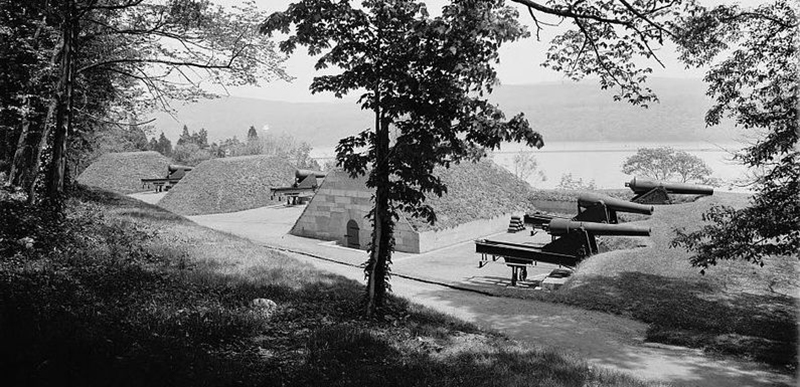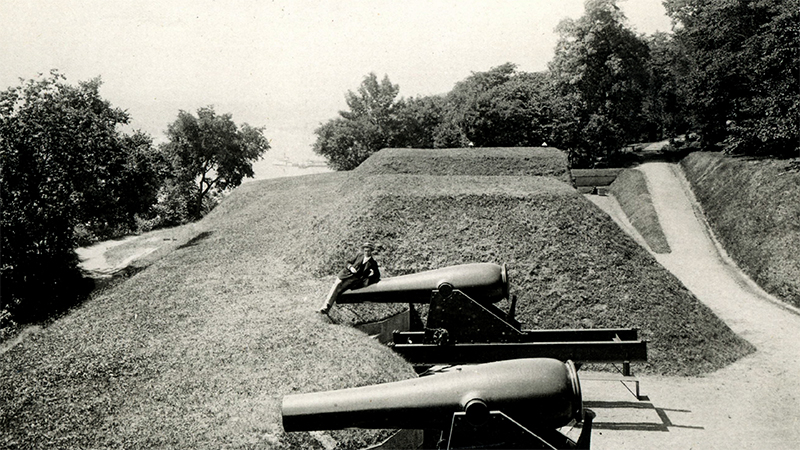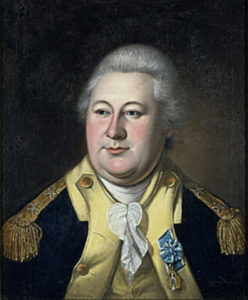Knox (South) Battery

SIGNIFICANCE:
Knox Battery (also known as South Battery)
South Battery was the southernmost water battery constructed in 1778 and would have been the first battery at West Point with the ability to fire upon British ships sailing north up the Hudson River. They would first be taken under fire by the battery’s three 18-pounder cannons. Its matrosses were capable of placing fire on ships attempting to land troops at the first landing site south of the bend in the river. The cannons also covered the river to the east.
Because the British could rapidly approach if they had a favorable wind and tide, South Battery could only annoy British ships determined to run the works. However, its timely cannonade might dissuade a British expedition from coming ashore within its field of fire, particularly in view of the steep climb from the landing site that it covered to the level of the Plain. Documents indicate that by 1780 Knox Battery housed four 18-pounder and one 12-pounder cannons, giving it greater capability against British naval broadsides.

Knox Battery Re purposed
Although it is not clear exactly when a major transformation of this American Revolutionary Battery first took place, by 1901 the site had been reconstructed as a coast artillery battery. As you can see from the photos, it was oriented on the Hudson River and contained at least two 10-inch Rodman guns. While built to protect the southern approaches to West Point, the battery was used for ceremonial purposes and to mark auspicious occasions at the Academy.
In the 1980’s, Battery Knox was paved over to make room for the parking lot at Lincoln Hall which now houses the West Point Combating Terrorism Center and the departments of Social Sciences and English. Some of the original structures remain under the parking lot.
Knox Battery was named after Major General Henry Knox, one of Washington’s most distinguished commanders and the officer who, at the beginning of the war, accomplished the seemingly impossible task of transporting fifty-nine captured cannons and mortars from Fort Ticonderoga and Crown Point. In the dead of winter he brought them all the way from upper New York to Boston to reinforce Washington’s troops. As Dave Palmer writes in The River and the Rock: The History of Fortress West Point 1775-1783:

Knox Battery was named after Major General Henry Knox, one of Washington’s most distinguished commanders and the officer who, at the beginning of the war, accomplished the seemingly impossible task of transporting fifty-nine captured cannons and mortars from Fort Ticonderoga and Crown Point. In the dead of winter he brought them all the way from upper New York to Boston to reinforce Washington’s troops. As Dave Palmer writes in The River and the Rock: The History of Fortress West Point 1775-1783:
The role he was fated to play in shaping the future American army made it most appropriate that he should be West Point’s last wartime commander.” General Washington summed up his contribution: “His genius supplied the deficit of means.”

For many years after the inception of the United States Military Academy at West Point in 1802, cadets were required to complete a course in drawing. One assignment was to illustrate the grounds at West Point. These cadet drawings continue to provide invaluable insight into the evolution of West Point from the American Revolutionary period forward. This assignment completed by Cadet Chapman in 1830 clearly shows Knox Battery. Note that even though some of the the walls of Fort Clinton have begun to erode, much of Fortress West Point was still standing forty-seven years after the end of the American Revolution.
